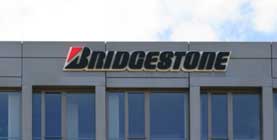Japanese tyre maker Bridgestone Corporation is to sell its anti-vibration rubber and chemical products solutions businesses. The company expects the respective deals will close by the end of July and end of August 2022. The chemical business, comprising automotive seat pad business, advanced chemical products business, and precision components for office equipment business, represents half of its sales, which were 55.7 billion yen (actual 2020).
Meanwhile, Bridgestone will sell its anti-vibration rubber business to China’s Anhui Zhongding Holding. The business had sales of 54.4 billion yen in 2020.
With the planned sale of the chemical products solutions business to Endeavour United (EU) II Investment Business Ltd Partnership, it is further consolidating its portfolio. As part of the agreement, Bridgestone will establish a wholly owned subsidiary company (the new company) which will succeed Bridgestone’s chemical products solutions business. Bridgestone will transfer all ownership of Bridgestone Group’s chemical products solutions business to the new company, and then, will sell all shares of stock of the new company to EU Investment Partnership. This transaction is expected to close by the end of August 2022, subject to regulatory approvals and other customary closing conditions.
Bridgestone will sell all stocks of Bridgestone Precision Molding Philippines, Inc. (BPMP) which is a manufacturing company of precision components for office equipment, directly to the new company at a later date, so the expected closure date of the transaction does not include that of BPMP.
Bridgestone adds it is restructuring the portfolio of its diversified products business to sharply focus on areas where it can leverage its core competencies. This is part of the overall reinforcement of portfolio management in the Mid Term Business Plan (2021-2023), announced on February 16, 2021. The Mid Term Business Plan (2021-2023) aims to rebuild earning power through expense and cost structure reformation and enforcing premium business strategy to allow the company to enhance strategic growth investment. By executing these strategies, Bridgestone is transforming to a “strong” Bridgestone capable of adapting to the changing business environment.
Chemical products solutions business is a part of the chemical and industrial products business which represents about half of the sales of the Bridgestone Group’s diversified products business. The group has both taken up and withdrawn from various diversified chemical and industrial products businesses throughout its history, responding to changes in social needs and the business environment.
Without exception, Bridgestone says it considered and evaluated chemical products solutions business thoroughly and comprehensively, including the pathway to make sustainable growth for both business and employees, potential to leverage Bridgestone’s core competencies, and profitability toward the future, in prior to the decision. As a result, Bridgestone has made the decision that it is the best for the business to grow further, continuing to provide social and customer value while maintaining the competitiveness under EU, which has various experience to revive many companies mainly in manufacturing business area. Also, Bridgestone expects that the employees can leverage their careers and skills for their growth through this new opportunity.
All employees associated with chemical products solutions business in the Group will work as members of EU through the transaction and it is also working closely with its customers, suppliers, and local communities to minimise the impact as much as possible.
As for the anti-vibration business, it is a part of the chemical and industrial products business which represents about half*1 of the sales of the Bridgestone Group’s diversified products business. As for the business transfer’s impact on Bridgestone’s earnings, management expects to post a loss on the sale of about 82 yen billion (after tax) recorded under profit or loss from discontinued operations separately from continuing operations. However, the exact amount is currently being examined and is therefore subject to change. The impact on its consolidated projections for 2021 to be minor.

